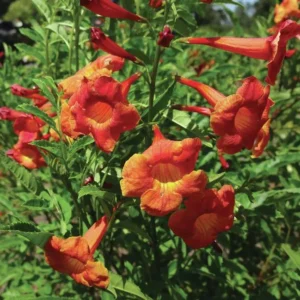Advantages of Choosing Grow Bags
Gardening has experienced a remarkable transformation in recent years, with modern methods replacing traditional techniques to offer more efficiency, flexibility, and sustainability. Among these innovations, grow bags have emerged as a highly practical and versatile solution for both novice and experienced gardeners. Unlike heavy and space-consuming ceramic or plastic pots, grow bags offer a lightweight, breathable, and eco-friendly alternative for plant cultivation.
Whether you’re working in a small apartment, rooftop, urban balcony, or a full-scale garden, grow bags provide numerous benefits that make them a go-to choice for plant enthusiasts. This article explores the advantages of choosing grow bags for gardening and why they have become an essential tool for modern cultivators.
In summary, grow bags represent a modern, flexible, and eco-conscious approach to gardening.
1. Excellent Root Health
One of the most significant advantages of grow bags is the enhanced root development they promote. Traditional plastic pots often restrict roots, leading to a condition known as root circling, where roots wrap around the inside of the container and suffocate the plant.
Grow bags, on the other hand, are made of breathable fabric that allows air to enter from all sides. This encourages air pruning, a process where roots are naturally stopped from circling once they reach the fabric wall. Instead, they branch out into a healthier, more fibrous root system. Healthier roots mean better nutrient absorption, leading to stronger, more vigorous plants.
2. Superior Drainage
Overwatering is a common problem in container gardening. Many traditional pots do not offer adequate drainage, leading to waterlogged soil, root rot, and ultimately plant death.
Grow bags solve this problem with their porous material, which allows excess water to drain out easily. This prevents soil from becoming compacted and soggy, ensuring that the plant roots get the right balance of moisture and oxygen.
3. Temperature Regulation
Unlike plastic or metal containers that can become too hot in the sun, fabric grow bags provide natural temperature control. The breathable fabric allows heat to escape, keeping the soil cooler in hot weather. In colder months, they can retain enough warmth to keep root temperatures stable.
This thermal regulation helps reduce plant stress and supports healthier growth throughout the seasons.
4. Portability and Lightweight Design
Grow bags are lightweight and easy to move, making them ideal for people who garden in small or temporary spaces. Whether you’re shifting plants to a sunnier spot or protecting them from a storm, grow bags allow you to relocate plants without much effort.
Additionally, their foldable nature means they can be stored compactly when not in use, which is a huge advantage over bulky pots.
5. Versatility in Sizes and Uses
Grow bags are available in a wide variety of sizes, from small 1-gallon bags for herbs to massive 100-gallon bags for trees or large vegetable plants. This flexibility allows gardeners to grow anything from tomatoes, potatoes, and peppers to flowers, herbs, and shrubs.
They’re also great for raised bed gardening, hydroponic setups, or even vertical gardening when used in tiers or on walls.
6. Cost-Effective Gardening Solution
Compared to ceramic or decorative planters, grow bags are relatively inexpensive. This affordability makes them accessible to hobby gardeners and commercial growers alike. Plus, the cost savings are compounded when you consider the benefits like better plant health, fewer losses due to overwatering, and minimal need for repotting.
Many brands even offer reusable grow bags, providing value over multiple seasons with proper care.
7. Eco-Friendly Option
Many grow bags are made from recycled materials or biodegradable fabric, making them an environmentally responsible choice. By choosing grow bags, gardeners can reduce their carbon footprint and contribute to sustainable gardening practices.
Unlike plastic pots that eventually crack or degrade and add to landfill waste, quality grow bags can be reused for years and then composted or recycled responsibly.
8. Improved Plant Yields
Because of the optimal root health, moisture regulation, and temperature control that grow bags provide, plants often grow faster and produce more fruit or flowers. Vegetables like tomatoes, peppers, eggplants, and even potatoes perform exceptionally well in grow bags due to their deep-rooting nature.
Many gardeners report higher yields and healthier harvests when switching from pots or ground planting to grow bags.
9. Prevention of Soil-Borne Diseases
Traditional in-ground gardening exposes plants to a wide range of soil-borne diseases, pests, and fungi. Grow bags provide a clean and isolated environment for your plants, helping to reduce the risk of these common issues.
Additionally, the ability to refresh or change the soil easily in grow bags allows gardeners to maintain better control over plant health and avoid infestations or infections.
Note:In summary, grow bags represent a modern, flexible, and eco-conscious approach to gardening.
10. Ideal for Small Spaces and Urban Gardening
Grow bags are a boon for urban gardeners who lack large yards or garden beds. They can be used on balconies, patios, rooftops, stairways, or even indoors near sunny windows.
Their adaptability allows anyone, regardless of space limitations, to enjoy the benefits of growing their own food or ornamental plants. With vertical stacking or tiered systems, even a very limited area can yield a productive garden using grow bags.
11. Easy Seasonal Transitions
Grow bags make it easier to adapt your garden across different seasons. For example, in hot climates, you can move sensitive plants into shade, and in colder regions, you can bring grow bags indoors to extend the growing season or protect perennials.
This flexibility allows for year-round gardening, even for those living in regions with extreme temperatures or unpredictable weather.
12. Custom Soil Control
When gardening in the ground, you’re limited by your native soil quality. With grow bags, you have complete control over the type and quality of soil you use.
This is especially useful for plants that require specific pH levels, well-drained soil, or nutrient-rich mixes. Customizing the soil mix in each grow bag ensures optimum conditions tailored to each plant’s needs.
13. Easy Maintenance and Cleaning
Grow bags are incredibly easy to clean. Once the growing season ends, simply empty the soil, rinse the bags, and let them dry. Most grow bags are machine washable or can be easily cleaned with soap and water.
Proper maintenance ensures that grow bags last multiple years, giving you consistent results with less effort.
14. Encourages Sustainable and DIY Gardening
The rise of grow bags has empowered many hobbyists, homesteaders, and urban farmers to pursue DIY gardening projects. They offer an affordable and accessible way to grow vegetables at home, reducing dependency on store-bought produce and encouraging self-sufficiency.
This practice supports a healthier lifestyle, promotes food security, and contributes to sustainable urban agriculture.
15. Perfect for Kids and Beginners
Grow bags are a great choice for beginners or children learning how to garden. Their manageable size, ease of use, and forgiving nature make them ideal for first-time gardeners who may not yet know all the ins and outs of plant care.
Plus, the quick visible results in grow bags help encourage consistent learning and enjoyment.
16. Improved Mobility for Disabled or Elderly Gardeners
For people with mobility issues or the elderly, grow bags make gardening much more accessible. Raised platforms, hanging systems, or tabletop grow bags eliminate the need for bending or digging, making it easier for everyone to enjoy the therapeutic benefits of gardening.
They can also be paired with raised bed frames or wheeled carts for additional convenience and comfort.
17. No Permanent Commitment
Grow bags offer a temporary gardening solution that doesn’t require major investments or construction. They’re perfect for renters, travelers, or anyone who needs a portable and low-commitment way to grow plants.
When you move or want to rearrange your garden layout, just pick up the bag and go—no digging or landscaping required.
18. Scalability for Commercial Use
Grow bags aren’t just for hobbyists. They’re increasingly used by commercial growers, nurseries, and greenhouse operators due to their affordability, ease of handling, and superior results. Farms growing strawberries, herbs, or cannabis often rely on grow bags for efficient space utilization and better crop control.
For agribusiness, they offer a scalable and modular solution that can increase productivity and reduce losses.
Conclusion
In summary, grow bags represent a modern, flexible, and eco-conscious approach to gardening. They combine the best aspects of traditional container gardening with innovative features that support root health, drainage, and mobility. From small urban spaces to commercial greenhouses, grow bags have transformed the way people grow plants, making gardening more accessible, efficient, and rewarding than ever before.
Whether you’re a beginner gardener or a seasoned horticulturist, investing in grow bags can elevate your gardening experience, promote sustainability, and lead to healthier plants and better yields. With numerous sizes, applications, and environmental benefits, grow bags truly are the future of smart gardening.
If you’d like this content broken into sections for a blog format or need an SEO-optimized version with headings, tags, and keyword suggestions, let me know!





